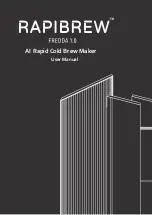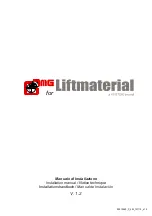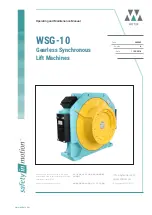
15
4. Rotate the artwork 180 degrees and repeat the process. Place the artwork back on
the stretcher plates in the “loaded position” and continue with the remaining
stretches.
Troubleshooting
Every machine leaves our facility fully assembled and tested, however, during transit it is
possible that the contents may have experienced some “sudden changes in motion”, this
can lead to misalignment issues and even breakage. This section will attempt to resolve
some of the possible issues you may encounter with your machine.
Clamping Bar Not Closing
The Foot Pedal operates like a light switch; in this case it is air and not electricity. If your
foot pedal does not close please ensure that you have at least 90 psi from the compressor
and that it is going into the machine at the
“green”
quick-connect fitting.
Air is going to the machine but it is still not closing?
Call us at 614-861-4582
Stretcher Bar is Hanging Up
In nearly every case this is caused during transit, the cylinders and their mounts are
“forced” out of alignment. This is best resolved over the phone.
If you are experiencing this problem please do not hesitate to contact us at 614-499-4989
and ask for Dave.
The Canvas is slipping during a stretch
The Clamping Bar is preset to 50 psi, located beneath the deck; this regulator
should not
be tampered with
unless you have been instructed by us to do so. Changing this setting
may cause severe damage to the Clamping Bar and will void your warranty. Do not
change this setting. Most stretches are done at no more than 30 psi; this will produce a
nice tight stretch with giclee canvas. Heavy canvas and oversized art may require more
pressure, but it should not exceed 50 psi. That is why we have preset the clamp to 50 psi
this will allow for a certain degree of “slip”. If the clamp is preset to 50 psi and the
stretching pressure exceeds 50 psi, then there will be slipping.
Stretcher Bar is lifting when stretching
This is by design. Smaller artwork will tend to rise very easily and large artwork may not
rise at all, but that is fine. Typically, the artwork will rise about 3-4”, as shown in the
photo below. The operator should not “push down” on the artwork in an effort to keep



































